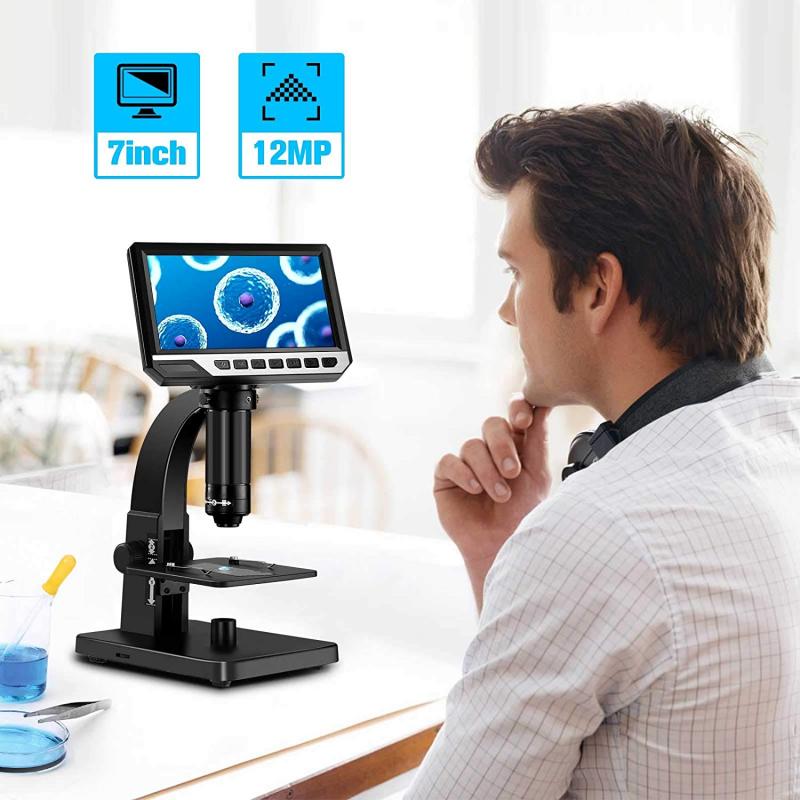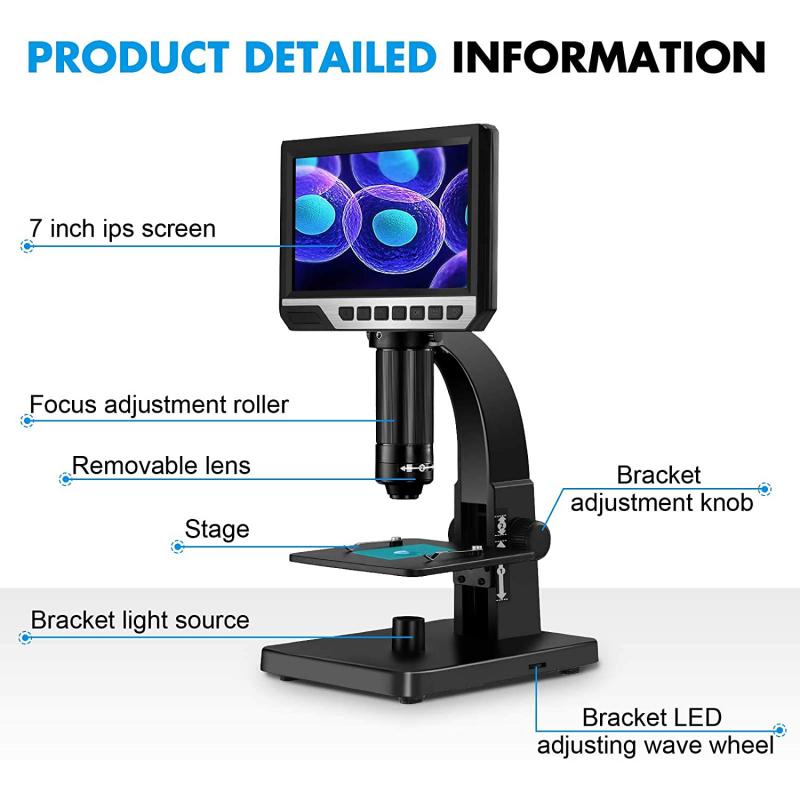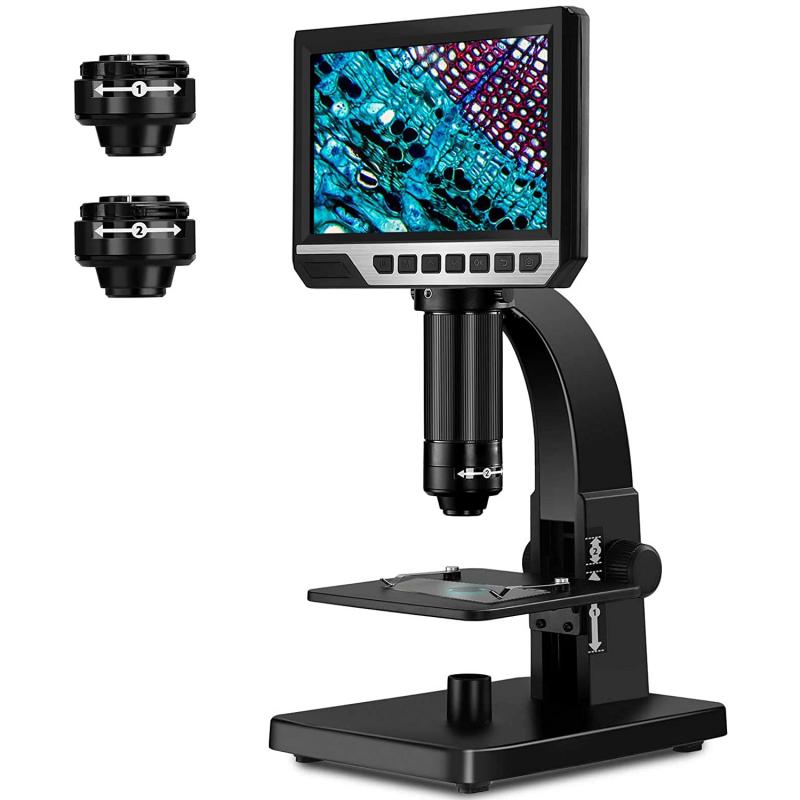What Is Fov In Microscope ?
FOV stands for Field of View in microscopy. It refers to the area or extent of the specimen that can be observed through the microscope at a given magnification. The FOV is determined by the combination of the objective lens and the eyepiece. A higher magnification objective lens typically results in a smaller FOV, while a lower magnification objective lens provides a larger FOV. The FOV is important because it determines the amount of detail that can be seen in a specimen and the overall size of the area being observed.
1、 Field of View (FOV) Definition and Importance in Microscopy
Field of View (FOV) in microscopy refers to the area visible through the microscope's objective lens. It is the diameter of the circular image that can be seen when looking through the eyepiece. FOV is an important parameter in microscopy as it determines the amount of specimen that can be observed at a given magnification.
The FOV is influenced by the objective lens and the eyepiece used. Higher magnification objectives typically have smaller FOVs, while lower magnification objectives have larger FOVs. This means that as the magnification increases, the area visible in the FOV decreases. Conversely, at lower magnifications, a larger area of the specimen can be observed.
The FOV is crucial in microscopy as it affects the level of detail and the ability to observe fine structures. A larger FOV allows for a broader view of the specimen, making it easier to locate specific areas of interest. On the other hand, a smaller FOV provides higher magnification and greater detail, but limits the overall view.
It is important to note that the FOV is not a fixed value and can vary depending on the microscope and the objective/eyepiece combination used. Additionally, the FOV can be affected by the size of the specimen being observed. For example, if the specimen is larger than the FOV, it may need to be scanned or tiled to capture the entire image.
In recent years, advancements in microscopy technology have allowed for the development of wider FOV imaging techniques. These techniques, such as panoramic imaging and stitching, enable the capture of larger areas of the specimen without sacrificing resolution. This has proven particularly useful in fields such as pathology and histology, where a comprehensive view of tissue samples is essential for accurate diagnosis.
In conclusion, the FOV in microscopy refers to the area visible through the microscope's objective lens and plays a crucial role in determining the level of detail and the ability to observe specific areas of interest. Advancements in imaging techniques have expanded the possibilities of capturing wider FOVs, enhancing the field of microscopy.

2、 Calculating FOV in Microscopy: Methods and Formulas
FOV, or field of view, in microscopy refers to the area of the specimen that is visible through the microscope lens. It is an important parameter in microscopy as it determines the amount of the specimen that can be observed at a given magnification. Calculating the FOV is crucial for accurate measurements and comparisons between different microscopes and specimens.
There are several methods and formulas to calculate the FOV in microscopy. One common method is to measure the diameter of the FOV using a stage micrometer, which is a glass slide with a known scale. By comparing the size of the scale on the stage micrometer to the size of the specimen, the FOV can be calculated.
Another method involves using the microscope's magnification and the known size of the specimen. By dividing the size of the specimen by the magnification, the FOV can be determined. This method is particularly useful when the size of the specimen is known or when comparing different magnifications.
It is important to note that the FOV is inversely proportional to the magnification. As the magnification increases, the FOV decreases, resulting in a smaller area of the specimen being visible. This trade-off between magnification and FOV is a fundamental concept in microscopy.
In recent years, advancements in microscopy technology have led to the development of techniques such as confocal microscopy and super-resolution microscopy. These techniques allow for higher magnifications and improved resolution, but they often come at the cost of a smaller FOV. However, the ability to capture detailed images of subcellular structures and molecular interactions has revolutionized the field of microscopy and opened up new avenues of research.
In conclusion, FOV is a critical parameter in microscopy that determines the area of the specimen visible through the microscope lens. Calculating the FOV involves measuring the size of the specimen or using a stage micrometer and considering the magnification of the microscope. Advancements in microscopy technology have allowed for higher magnifications and improved resolution, but often at the expense of a smaller FOV.

3、 FOV and Magnification Relationship in Microscopes
FOV, or field of view, refers to the area that can be seen through a microscope at a given magnification. It is the diameter of the circular image that is visible when looking through the eyepiece. The FOV is an important parameter in microscopy as it determines the amount of specimen that can be observed at a time.
The relationship between FOV and magnification in microscopes is inversely proportional. As the magnification increases, the FOV decreases. This means that at higher magnifications, a smaller area of the specimen is visible, but with greater detail. Conversely, at lower magnifications, a larger area of the specimen is visible, but with less detail.
The relationship between FOV and magnification can be mathematically described using the formula: FOV1 x Mag1 = FOV2 x Mag2, where FOV1 and Mag1 represent the initial FOV and magnification, and FOV2 and Mag2 represent the new FOV and magnification.
It is important to note that the FOV is not solely determined by the magnification of the objective lens, but also by the size of the field diaphragm and the eyepiece. Adjusting these components can help optimize the FOV for a specific observation.
In recent years, advancements in microscopy technology have allowed for the development of microscopes with larger FOVs and higher magnifications. This has been made possible through the use of advanced optics, such as wide-field and confocal microscopy techniques. These advancements have greatly enhanced the ability to observe and analyze microscopic specimens, leading to new discoveries and advancements in various scientific fields.
In conclusion, the FOV and magnification in microscopes have an inverse relationship. As magnification increases, the FOV decreases. However, recent advancements in microscopy technology have allowed for the development of microscopes with larger FOVs and higher magnifications, enabling more detailed observations and analysis of microscopic specimens.

4、 FOV and Depth of Field in Microscopy
FOV stands for Field of View in microscopy. It refers to the area that is visible through the microscope lens or eyepiece. The FOV is determined by the magnification of the objective lens and the eyepiece. Higher magnification lenses typically have a smaller FOV, while lower magnification lenses have a larger FOV.
The FOV is an important consideration in microscopy as it determines the amount of specimen that can be observed at a given time. A larger FOV allows for a broader view of the specimen, while a smaller FOV provides a more detailed and magnified view. Researchers and scientists often choose the appropriate FOV based on their specific needs and objectives.
Depth of field, on the other hand, refers to the range of distance that appears in focus in a microscope image. It is influenced by factors such as the numerical aperture of the lens, the wavelength of light used, and the refractive index of the medium between the lens and the specimen. A larger depth of field allows for more of the specimen to be in focus at once, while a smaller depth of field results in a narrower plane of focus.
In recent years, advancements in microscopy technology have allowed for improved FOV and depth of field. Techniques such as confocal microscopy and multiphoton microscopy have enabled researchers to obtain high-resolution images with a larger FOV and increased depth of field. These advancements have greatly contributed to our understanding of biological processes and have opened up new avenues for research in various fields.
In conclusion, FOV and depth of field are important considerations in microscopy. The FOV determines the area visible through the microscope, while the depth of field determines the range of distance that appears in focus. Recent advancements in microscopy technology have allowed for improved FOV and depth of field, enabling researchers to obtain high-resolution images and further our understanding of the microscopic world.































There are no comments for this blog.